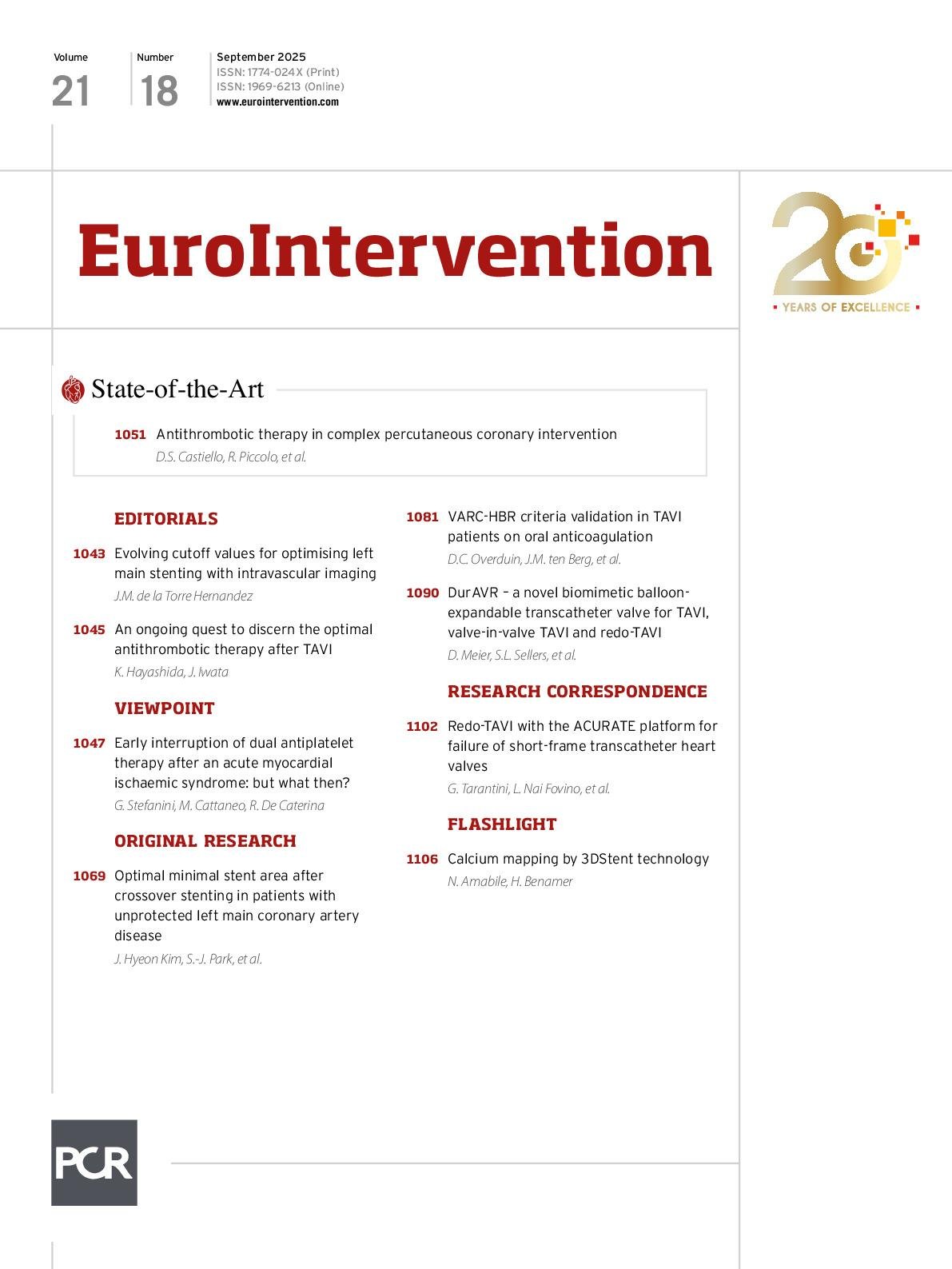A 78-year-old man with stable angina, a positive stress test, and a tight left anterior descending artery (LAD) with a mildly calcified lesion on computed tomography (CT) scan (Moving image 1) was referred for coronary angiography. The angiography confirmed the stenosis, and percutaneous coronary intervention (PCI) of this lesion was proposed.
We analysed the calcium burden with a multimodal approach to plan the intervention and the plaque preparation. After initial angiography (Moving image 2), we performed X-ray-based calcium (Ca2+) mapping through adaptation of the 3DStent technology (3DS; GE HealthCare) to the native vessel1. A deflated 2.0x15 mm PCI balloon was first placed within the target lesion, and a 200° rotational angiography was acquired (Supplementary Figure 1). The data were processed through dedicated software which produced 0.1 mm voxel-based images that were visualised with different standard rendering methods, including a three-dimensional image that was analysable in different projections (Supplementary Figure 1, Moving image 3) and cross-section views (Figure 1A). These images provided two- and three-dimensional representations of the calcifications...
Sign up for free!
Join us for free and access thousands of articles from EuroIntervention, as well as presentations, videos, cases from PCRonline.com

